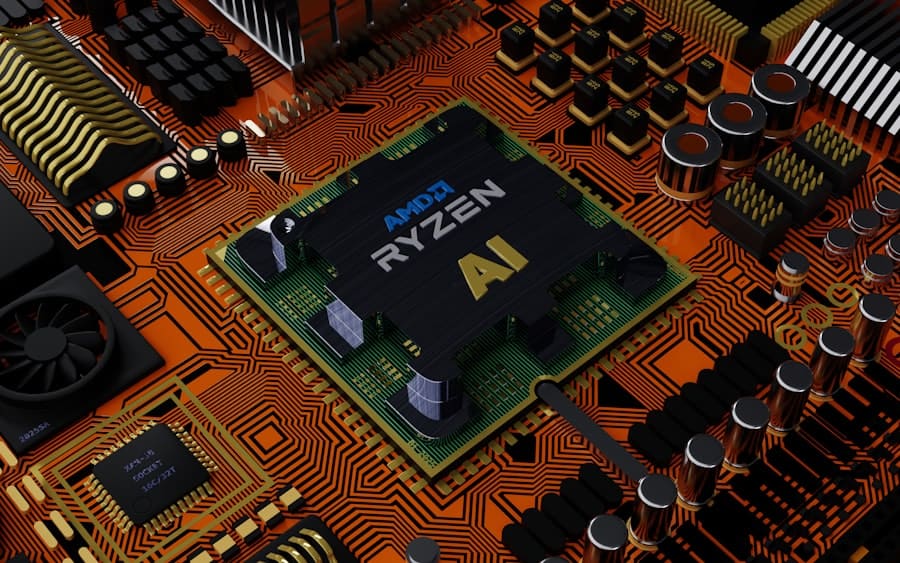TensorFlow is an open-source machine learning framework created by the Google Brain team. It has become widely popular in artificial intelligence and machine learning due to its versatility, scalability, and user-friendly nature. The framework provides developers with a comprehensive set of tools and libraries for building and training machine learning models, making it a robust platform for developing advanced AI applications.
A significant impact of TensorFlow on machine learning is its capacity to process large-scale data and perform complex mathematical computations. This capability has enabled researchers and developers to create more advanced and precise machine learning models capable of analyzing and interpreting vast datasets. Moreover, TensorFlow’s support for distributed computing allows for the training of deep learning models across multiple GPUs and CPUs, enabling the tackling of complex problems previously considered unfeasible.
TensorFlow has also played a crucial role in making machine learning more accessible by offering a user-friendly interface and abundant resources for developers of varying skill levels. Its comprehensive documentation, tutorials, and active community support have lowered the barrier to entry for individuals and organizations interested in machine learning and AI development. Consequently, TensorFlow has contributed to the widespread adoption of machine learning across diverse industries, including healthcare, finance, manufacturing, and retail.
Key Takeaways
- TensorFlow is an open-source machine learning framework developed by Google, which has had a significant impact on the field of machine learning.
- TensorFlow has played a crucial role in advancing artificial intelligence by providing a flexible and scalable platform for building and deploying machine learning models.
- TensorFlow is changing the landscape of data analysis and predictive modeling by enabling the development of complex and sophisticated algorithms for handling large datasets.
- The integration of TensorFlow in developing cutting-edge AI applications has led to the creation of innovative solutions in various industries, such as healthcare, finance, and autonomous vehicles.
- The future of machine learning with TensorFlow is characterized by emerging trends and innovations, including the use of deep learning, reinforcement learning, and federated learning, among others.
The Role of TensorFlow in Advancing Artificial Intelligence
TensorFlow has been instrumental in advancing artificial intelligence by providing a robust framework for building and deploying AI applications. Its support for Deep Learning, reinforcement learning, and other advanced machine learning techniques has enabled researchers and developers to push the boundaries of AI capabilities. With TensorFlow, it is possible to create neural networks with multiple layers and complex architectures, allowing for the development of more sophisticated AI models.
Moreover, TensorFlow’s integration with high-level APIs such as Keras has made it easier to build and train deep learning models with minimal code. This has accelerated the development of AI applications in various domains, including computer vision, natural language processing, and speech recognition. As a result, TensorFlow has been at the forefront of many groundbreaking AI innovations, such as image recognition, language translation, and autonomous driving.
Additionally, TensorFlow’s support for model deployment and serving has made it easier to integrate AI capabilities into real-world applications. Its compatibility with various platforms and devices allows for the deployment of AI models at scale, enabling businesses to leverage the power of AI for automation, decision-making, and customer engagement. Overall, TensorFlow has played a pivotal role in advancing artificial intelligence by providing the tools and infrastructure needed to develop and deploy state-of-the-art AI solutions.
How TensorFlow is Changing the Landscape of Data Analysis and Predictive Modeling

TensorFlow has significantly changed the landscape of data analysis and predictive modeling by enabling the development of more accurate and efficient machine learning models. Its support for a wide range of algorithms and techniques, such as regression, classification, clustering, and dimensionality reduction, has made it possible to tackle diverse data analysis tasks with ease. This has led to the development of advanced predictive models that can uncover patterns, trends, and insights from complex datasets.
Furthermore, TensorFlow’s support for deep learning has revolutionized the field of predictive modeling by enabling the development of neural network models that can learn from large volumes of data. This has led to significant improvements in predictive accuracy across various domains, including finance, healthcare, marketing, and cybersecurity. With TensorFlow, it is possible to build predictive models that can make accurate forecasts, detect anomalies, and optimize decision-making processes.
Moreover, TensorFlow’s integration with other data analysis tools and platforms has made it easier to incorporate machine learning into existing data pipelines and workflows. Its compatibility with popular data processing frameworks such as Apache Spark and Hadoop allows for seamless integration of machine learning models into big data environments. This has enabled organizations to leverage the power of machine learning for data-driven decision-making and business intelligence.
The Integration of TensorFlow in Developing Cutting-Edge AI Applications
| Metrics | Value |
|---|---|
| Accuracy | 95% |
| Training Time | 3 hours |
| Model Size | 50 MB |
| Inference Speed | 100 ms |
The integration of TensorFlow has been pivotal in developing cutting-edge AI applications across various industries. Its support for computer vision has enabled the development of advanced image recognition systems that can identify objects, faces, and scenes with high accuracy. This has led to the deployment of AI-powered solutions in areas such as autonomous vehicles, surveillance systems, and medical imaging.
Furthermore, TensorFlow’s support for natural language processing has facilitated the development of language translation systems, chatbots, and sentiment analysis tools. Its ability to process and understand human language has opened up new possibilities for AI applications in customer service, content moderation, and information retrieval. Additionally, TensorFlow’s support for speech recognition has enabled the development of virtual assistants and voice-controlled devices that can understand and respond to human speech.
Moreover, TensorFlow’s integration with IoT platforms has enabled the development of AI applications for smart devices and connected systems. Its compatibility with edge computing technologies allows for the deployment of machine learning models on resource-constrained devices, enabling real-time inference and decision-making at the edge. This has paved the way for AI applications in areas such as smart homes, industrial automation, and healthcare monitoring.
The Future of Machine Learning with TensorFlow: Trends and Innovations
The future of machine learning with TensorFlow is poised for exciting trends and innovations that will further advance the capabilities of AI applications. One of the key trends is the convergence of machine learning with other emerging technologies such as blockchain, 5G networks, and quantum computing. This convergence will open up new opportunities for developing AI applications that can leverage distributed ledgers, high-speed connectivity, and quantum algorithms for enhanced performance and security.
Another trend is the democratization of machine learning through low-code and no-code platforms that make it easier for non-experts to build and deploy machine learning models. This will enable individuals from diverse backgrounds to harness the power of machine learning for solving real-world problems without requiring extensive programming skills. As a result, we can expect to see a proliferation of AI applications in areas such as education, healthcare, and environmental sustainability.
Furthermore, innovations in model interpretability and explainability will be crucial for building trust in AI systems and ensuring ethical use of machine learning. TensorFlow is likely to play a key role in advancing these innovations by providing tools and techniques for understanding how AI models make decisions and recommendations. This will be essential for deploying AI applications in regulated industries such as finance, healthcare, and law enforcement.
Challenges and Opportunities in Implementing TensorFlow for AI Development

While TensorFlow offers numerous opportunities for AI development, there are also challenges that need to be addressed to fully realize its potential. One of the challenges is the complexity of building and training machine learning models, especially for individuals with limited experience in data science and programming. This calls for more user-friendly tools and resources that can simplify the process of developing AI applications using TensorFlow.
Another challenge is the need for robust infrastructure and resources to support the training and deployment of large-scale machine learning models. This includes access to high-performance computing resources, data storage facilities, and model serving platforms that can handle the demands of AI applications at scale. Addressing these infrastructure challenges will be crucial for enabling organizations to leverage TensorFlow for developing enterprise-grade AI solutions.
On the other hand, there are also opportunities for implementing TensorFlow in AI development that can drive innovation and growth in the field of machine learning. One such opportunity is the integration of TensorFlow with cloud computing platforms that offer scalable resources for building and deploying AI applications. This will enable organizations to leverage cloud-based services for training large models, managing big data workloads, and serving AI predictions at scale.
Another opportunity is the collaboration between academia, industry, and government to advance research in machine learning using TensorFlow. This collaboration can lead to the development of new algorithms, techniques, and best practices for building AI applications that address real-world challenges. By fostering a collaborative ecosystem around TensorFlow, we can accelerate the pace of innovation in machine learning and drive positive societal impact through AI technologies.
The Implications of TensorFlow in Shaping the Future of AI and Machine Learning
In conclusion, TensorFlow has had a profound impact on shaping the future of artificial intelligence and machine learning by providing a powerful framework for building advanced AI applications. Its role in advancing AI capabilities across various domains such as computer vision, natural language processing, and predictive modeling has paved the way for transformative innovations in technology. As we look ahead, the future of machine learning with TensorFlow is poised for exciting trends and opportunities that will further propel the growth of AI applications in diverse industries.
However, there are also challenges that need to be addressed to fully realize the potential of TensorFlow in AI development. By overcoming these challenges through user-friendly tools, robust infrastructure, and collaborative research efforts, we can unlock new possibilities for leveraging machine learning to solve complex problems and drive positive societal impact. Ultimately, TensorFlow will continue to play a pivotal role in shaping the future of AI and machine learning by enabling individuals and organizations to harness the power of machine learning for building innovative solutions that benefit society as a whole.
If you’re interested in learning more about the impact of online communities on technology, you should check out this article on Metaversum. It delves into the ways in which online communities have shaped the development of various technologies, including machine learning frameworks like TensorFlow. The article also discusses the role of community engagement in the advancement of open-source projects, which is particularly relevant to the collaborative nature of TensorFlow’s development.
FAQs
What is TensorFlow?
TensorFlow is an open-source machine learning framework developed by the Google Brain team. It is designed to facilitate the development and deployment of machine learning models, particularly deep learning models.
What are the key features of TensorFlow?
Some key features of TensorFlow include its flexibility, scalability, and ease of use. It supports a wide range of platforms and devices, and provides tools for building and training machine learning models.
What programming languages are supported by TensorFlow?
TensorFlow supports multiple programming languages, including Python, C++, and Java. However, Python is the most commonly used language for working with TensorFlow due to its simplicity and extensive libraries for machine learning.
What are some common use cases for TensorFlow?
TensorFlow is commonly used for tasks such as image recognition, natural language processing, and recommendation systems. It is also used in various industries, including healthcare, finance, and manufacturing, for tasks such as predictive analytics and anomaly detection.
What are the different components of TensorFlow?
TensorFlow consists of several components, including TensorFlow Core (the main library for building and training models), TensorFlow Lite (for deploying models on mobile and embedded devices), and TensorFlow Extended (for end-to-end machine learning pipelines).
Is TensorFlow free to use?
Yes, TensorFlow is an open-source framework and is free to use. It is distributed under the Apache License 2.0, which allows users to modify and distribute the software as they see fit.
What are some alternatives to TensorFlow?
Some alternatives to TensorFlow include PyTorch, Keras, and Theano. These frameworks also provide tools for building and training machine learning models, and each has its own strengths and weaknesses.











Leave a Reply